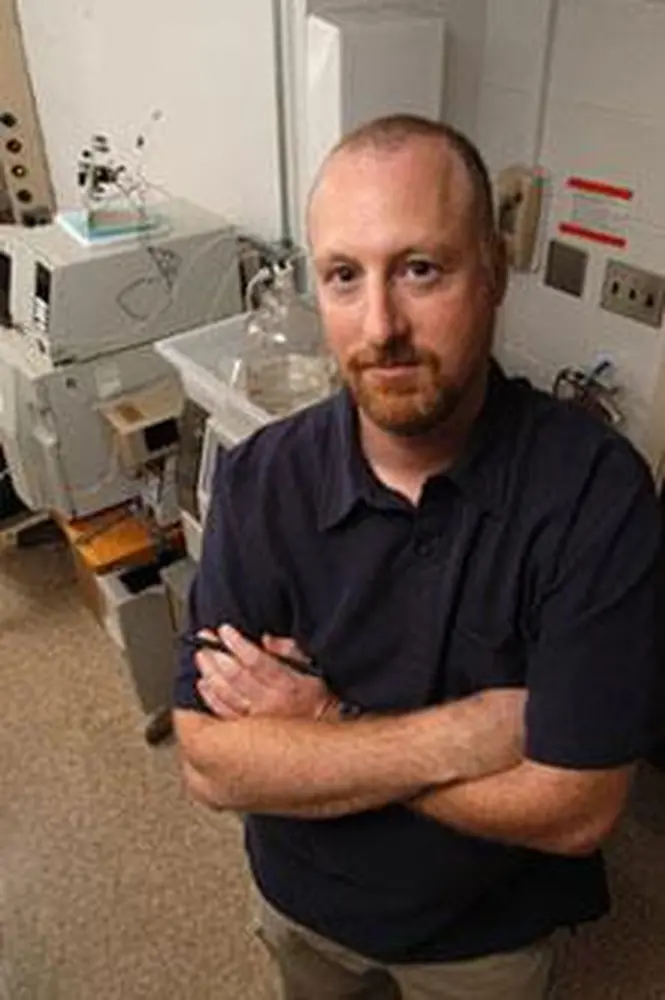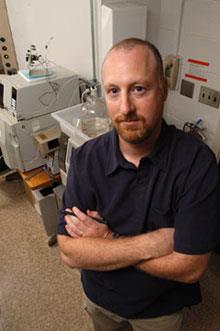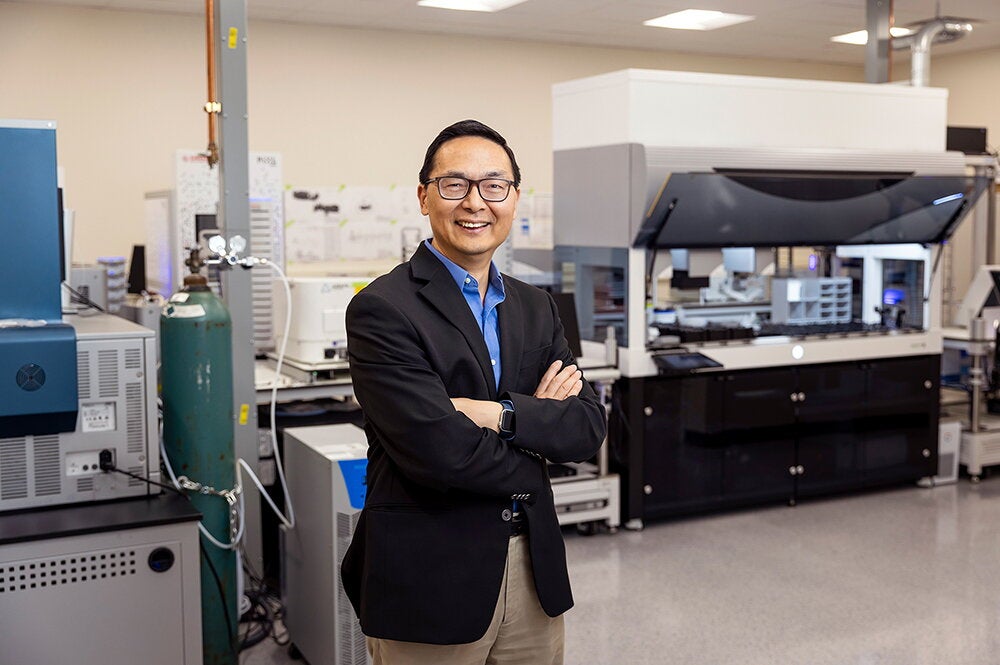

Vaccines and medicines delivered by shots may someday be timed to release the drugs with unprecedented precision, thanks to a unique collaboration among University of Illinois scientists.
Daniel Pack, a chemical engineer in LAS, has teamed with Kevin Kim in the Department of Electrical and Computer Engineering, to create polymer "microspheres" of extremely precise sizes.
A microsphere is a very small polymer bead-anywhere from 20 to 100 microns diameter-that encases a drug, explains Pack. The size of the polymer bead determines how quickly the medicine is released into the body. (To get an idea of the dimensions involved, 100 microns is roughly the thickness of a strand of human hair.)
By controlling the microsphere size, it's easier to control when the drug is released. And if microspheres can be designed to release drugs at different times, it's possible that certain vaccines could be administered with fewer shots-possibly with only one shot.
These "single-shot vaccines" would be critical in Third World countries, where the population is migratory or refrigeration is scarce-making booster shots difficult to administer. Single-shot vaccines would also be important in developed countries, where people commonly forget to get follow-up booster shots at the right time.
"Non-compliance is responsible for several hundred million dollars of medical costs per year," says Pack.
A lot of researchers are working on microspheres, he says. But what makes their work unique is the involvement of Kim, who typically uses his precise technology in the world of electronics.
By taking this technology to the biological world, Kim and Pack are able to create uniform-size microspheres that vary by only plus or minus 2 microns. Typically, microspheres of the same supposed size vary by as much as 60 microns.
"The ultimate goal is to release drugs at a constant rate," says Pack. "This is the Holy Grail of controlled release."


